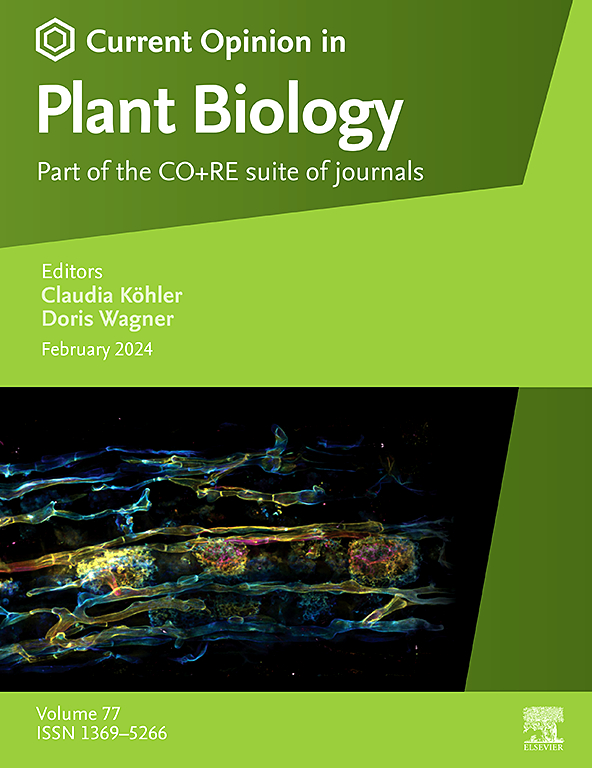植物细胞信号转译控制模式研究进展。
IF 7.5
2区 生物学
Q1 PLANT SCIENCES
引用次数: 0
摘要
蛋白质合成可以在多个调控水平上参与植物细胞信号传导。最近的研究扩大了直接受翻译调控影响的条件。这种控制可以平衡对发育、环境和各种应激刺激的反应。具有翻译调节证据的过程包括:对细菌病原体的免疫、共生相互作用、非生物反应、激素感知、光依赖性代谢以及侧根形成、根毛生长和萼片形成的发育程序。翻译控制模式依赖于mRNA的序列和二级结构,这是由于上游开放阅读框(uorf)和/或内部核糖体进入位点(IRES)、蛋白质结合区或结构的存在,以及转录组mRNA修饰如n6 -甲基腺苷、n4 -乙酰胞苷或假尿嘧啶的解码。此外,核糖体蛋白和eIF4G、eIFiso4G、eIF2等真核起始因子的翻译后修饰以及核糖体蛋白组成的变化也有助于翻译控制。这些因子、mrna、调节蛋白和其他rna可以被生物分子凝聚物(如应力颗粒、加工体等)的形成所限制,从而形成全局和特异性调节翻译的途径。所涵盖的主题将翻译作为细胞在发育过程中和环境背景下反应的中心。目前对翻译的理解已经允许在作物中应用的发展,加强了植物中翻译控制研究的相关性。本文章由计算机程序翻译,如有差异,请以英文原文为准。
Update on translational control modes in plant cell signaling
Protein synthesis can contribute to plant cell signaling at multiple regulatory levels. Recent studies have expanded the conditions that are directly impacted by translational regulation. This control can balance responses to developmental, environmental, and diverse stress stimuli. Processes with evidence of translational regulation include: immunity to bacterial pathogens, symbiotic interactions, abiotic responses, hormonal perception, light-dependent metabolism, and developmental programs for lateral root initiation, root hair growth, and sepal initiation. Translational control modes rely on the sequence and secondary structure of mRNAs due to the presence of upstream open reading frames (uORFs) and/or internal ribosome entry sites (IRES), protein-binding regions or structures, and the decoding of the epitranscriptomic mRNA modifications such as N6-methyladenosine, N4-acetylcytidine or pseudouridine. In addition, the post-translational modification of ribosomal proteins and eukaryotic initiation factors such as eIF4G, eIFiso4G, eIF2, as well as changes in ribosome protein composition contribute to translational control. These factors, mRNAs, regulatory proteins and other RNAs can be confined by the formation of biomolecular condensates such as stress granules, processing bodies and others, resulting in paths that modulate translation both globally and specifically. The covered topics place translation as a hub for cell responses during development and within the environmental context. Current understanding of translation has allowed the development of applications in crops, reinforcing the relevance of the study of translational control in plants.
求助全文
通过发布文献求助,成功后即可免费获取论文全文。
去求助
来源期刊

Current opinion in plant biology
生物-植物科学
CiteScore
16.30
自引率
3.20%
发文量
131
审稿时长
6-12 weeks
期刊介绍:
Current Opinion in Plant Biology builds on Elsevier's reputation for excellence in scientific publishing and long-standing commitment to communicating high quality reproducible research. It is part of the Current Opinion and Research (CO+RE) suite of journals. All CO+RE journals leverage the Current Opinion legacy - of editorial excellence, high-impact, and global reach - to ensure they are a widely read resource that is integral to scientists' workflow.
 求助内容:
求助内容: 应助结果提醒方式:
应助结果提醒方式:


